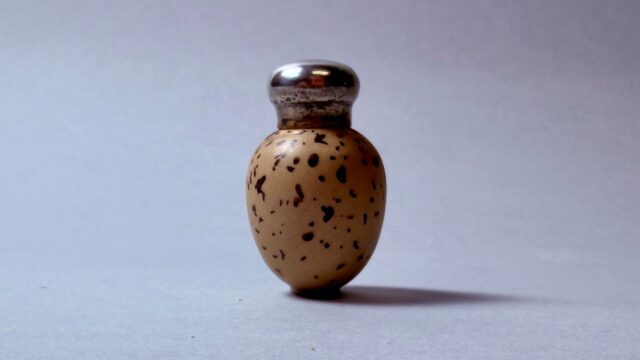George Chapman (1908-1993)
Chapman was born in East Ham, London, the son of a superintendent on the London, Midland and Scottish Railway. He attended college in Devon, where his deafness meant academia was challenging, but nevertheless he managed to gain a place at Gravesend School of Art. In 1928, he went to train as a commercial designer for the advertising agency, W S Crawford, under the tutelage of influential graphic designer Ashley Havinden. Later in the ‘30s, he worked on advertising campaigns with Jack Beddington who was best known as the head of the Ministry of Information during the Second World War. As well as George Chapman, Jack Beddington employed a stable of important artists of the period including John Piper, Paul Nash and Graham Sutherland.

























Clearly there was a promising career ahead of George Chapman in the advertising world, and he was able to work with hugely talented graphic designers, but in 1937 he decided to forego the comfortable life and become a full-time painter. He enrolled at the Slade School of Fine Art, and then a year later at the Royal College of Art.
In 1951, he and his family left London and moved to Essex to teach graphic design. It is there that he that he finally began concentrating on painting, by sharpening his techniques and experimenting with subject matter.
Soon after, Chapman found his inspiration when he took a trip to South Wales and discovered the Rhondda Valley. It proved to be the artist’s moment of revelation; ‘I realised that here I could find the material that would perhaps make me a painter at last.' So, Chapman would return time after time to the Rhondda to paint and produce prints.
When we look at Chapman’s Rhondda work, we see an artist who aimed to understand the internal organs of Valleys towns and communities. The parks and pleasant spaces are largely ignored but instead he focused on the nooks and crannies. He painted where only the locals have cause to visit - the backstreets, the alleys, the railway sidings, often at dusk and in poor weather. He observed the daily routines of Rhondda folk - the women taking in the washing from the line, the children playing street games, men recoiling into heavy overcoats to protect themselves from the elements, street gossipers, telegraph poles, traffic, shoppers, short-cuts and television aerials.
By capturing this ordinary, he was a maker of documentaries on canvas, and with the passage of time, and with the inevitable social changes over the years, these documentaries have become even more important.
Chapman claimed that he was motivated as an artist purely by his creativity to paint a picture, and his love affair with the Rhondda, there was not a strong political feeling within his work. Yet one does wonder if this was entirely true as he was a committed socialist. He had seen large-scale unemployment, poverty, and unrest in London during the 1930s. Perhaps this was why he felt so at home in the Valleys, where his socialist views were shared and where he could empathise with the hardships and trials. In this regard perhaps he was far better suited to ‘artist’ rather than in the overtly capitalist advertising industry.
In 1957, he was awarded the Gold Medal for Fine Art at the Royal National Eisteddfod of Wales, and in 1960, St George's Gallery Prints published the Rhondda Suite of etchings, which are regarded as some of the most important prints produced in relation to British industrial landscape.
Unfortunately for Chapman though, the 1960s saw a push away from such gritty documentary work of industrial Britain; movements such as Pop Art, Avant Garde and Abstract Art became the fashion of the day. Consequently, Chapman became disillusioned with the art world. He moved to Aberaeron and withdrew from the gallery scene. The retreat continued until the 1980s, when with excitement and renewed confidence he returned to the Rhondda and his brushes. He held a highly successful retrospective exhibition at Aberystwyth Arts Centre in 1989 and at the Goldmark Gallery in 1992. Now Chapman’s work is in several public collections including Victoria & Albert Museum, National Museum of Wales and the Glynn Vivian Art Gallery, Swansea.
We sell both original paintings, etching and prints to collectors around the UK and once again there is a strong London following for his work - six decades after he had been shunned by the London art establishment. What comes around goes around as they say.
A selection of George Chapman’s work can be seen below including etchings and prints with prices noted. According to data on ATG Media, we currently hold the auction record for his work at £5000.
If you have a George Chapman painting or print that you would like an opinion on, then we would love to hear from you. Valuations and assessments of this nature are given free of charge without obligation. Please contact:
Ben Rogers Jones ben.rogersjones@rogersjones.co.uk








